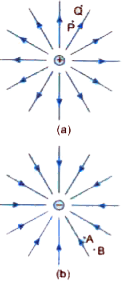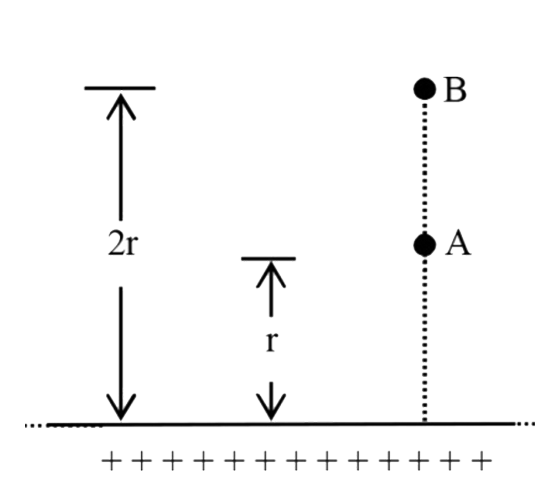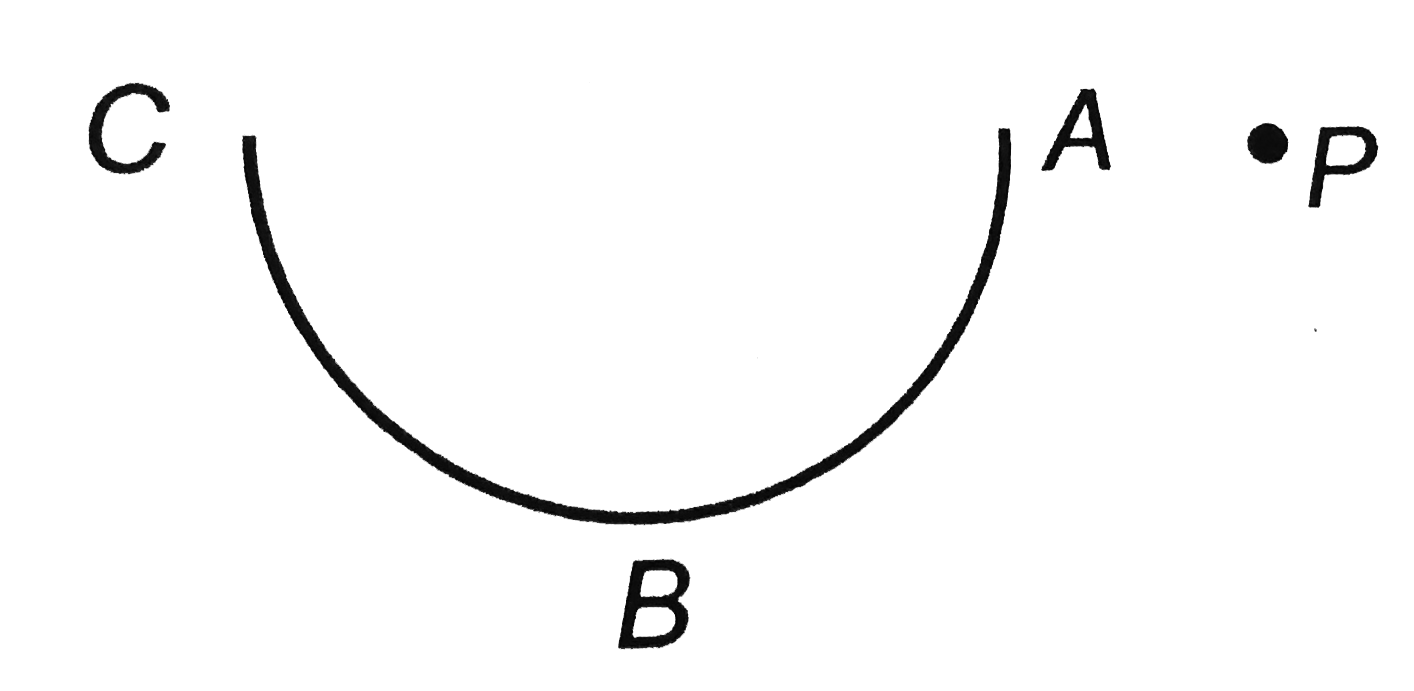There are infinite equipotential lines all parallel to in a right angled triangular region as shown in the figure. All the points on a line have the same potential proportional to the length of the line.
A positive charge is moved from to and separately to do work. & , respectively, then

will remain at rest.
Electric field is parallel to .
Topper's Solved these Questions
- GMP ASSESMENTBOOK - FIITJEECHAPTER - GMP ASSESMENTEXERCISE - Numerical Based
61 Videos
- GMP ASSESMENTBOOK - FIITJEECHAPTER - GMP ASSESMENTEXERCISE - Multiple Question
58 Videos
- GENERAL PHYSICSBOOK - FIITJEECHAPTER - GENERAL PHYSICSEXERCISE - MATRIX MATCH TYPE
3 Videos
- GRAVITATIONBOOK - FIITJEECHAPTER - GRAVITATIONEXERCISE - Numerical based Question
2 Videos
Similar Questions
Fig (a) and (b) show the field lines of a single positive and negative charges respectively .
Give the sign of the work done by the field in moving a small positive charge from Q to P .

View SolutionBetween two infinitely long wires having linear charge densities λ and −λ there are two points A and B shown in the figure. The amount of work done by the electric field moving a point charge q0 from A to B is equal to

View Solution
Knowledge Check
Same equipotential lines distributed in space are shown below. A charged object moves from A to B
 AWork done is same in fig (I), (II) nad (III)BWork done is greatest in fig (I)CWork done is least in fig (II)DWork done in fig (III) is greater then fig (II) but equal to that in fig (I)
AWork done is same in fig (I), (II) nad (III)BWork done is greatest in fig (I)CWork done is least in fig (II)DWork done in fig (III) is greater then fig (II) but equal to that in fig (I)Same equipotential lines distributed in space are shown below. A charged object moves from A to B:
 AWork done is same in fig (I), (II) and (III)BWork done is greatest in fig (I)CWork done is least in fig (II)DWork done in fig (III) is greater then fig (II) but equal to that in fig (I)
AWork done is same in fig (I), (II) and (III)BWork done is greatest in fig (I)CWork done is least in fig (II)DWork done in fig (III) is greater then fig (II) but equal to that in fig (I)A body is moving along the curve, ABC as shown in the figure, and the initial and fina positions are A and C, respectively. Displacement is the line joining
 Ainitial and final position of the bodyBmidpoint (B) and final position of the bodyCmidpoint (B) and initial position of the bosyDBoth (2) and (3)
Ainitial and final position of the bodyBmidpoint (B) and final position of the bodyCmidpoint (B) and initial position of the bosyDBoth (2) and (3)
An infinitely long line of linear charge density λ is shown in the figure. The potential difference VA−VB between the two points A and B is

View SolutionThree infinitely long conductors "A,B" and "C" are carrying current as shown in figure.The position of the point lying in the straight line "AC," where magnetic field is zero,is
View SolutionA body is moving along the curve, ABC as shown in the figure, and the initial and fina positions are A and C, respectively. Displacement is the line joining

View SolutionIn the following diagram the work done in moving a point charge from point P to point A,B and C is respectively as WA,WBandWC, then

View SolutionTwo equal positive charges are kept at points A and B. The electric potential at the points between A and B (exculding these points ) is studid while moving from A to b. The potential
View Solution
